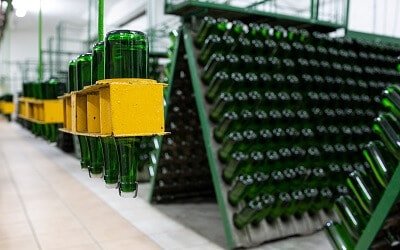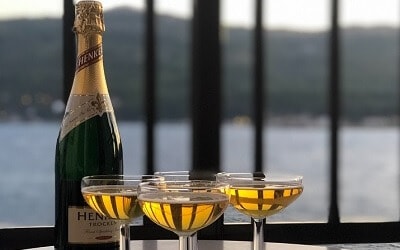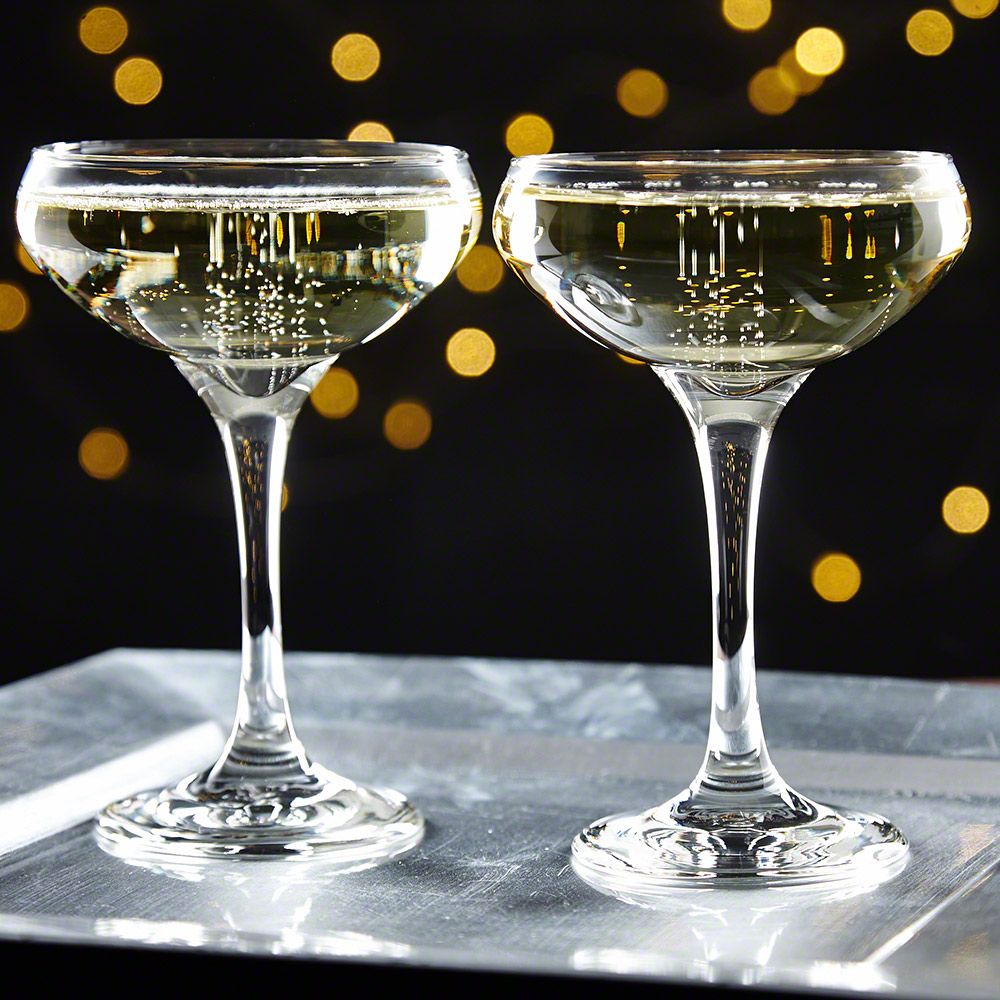Sparkling wine is the beverage to toast an anniversary, a just married couple, or a successful business deal. French Champagne, Italian Prosecco, or Spanish Cava are famous options for these occasions. But do you know the most popular sparkling wine in Germany? If not, you might have missed something. Let us talk about Sekt.
Sekt is the name of a sparkling wine that’s made in Germany or Austria. It is the most famous sparkling wine in these countries. Vintners use different production methods to produce various styles that differ in color, taste, and quality.
Sekt has a fascinating history that started in France. And its name is derived from an even more interesting story. In this article, we will discuss all the important details:
- What Is Sekt Made From?
- Where Does Sekt Come From?
- Different Types of Sekt
- How Sekt Is Made
- What Does Sekt Taste Like?
- How to Serve Sekt
- How to Store Sekt
- Which Food Goes With Sekt?
- Sekt Shopping Tips
WHAT IS SEKT MADE FROM?
Numerous varietals qualify for the production of Sekt. The majority of wineries use white grapes such as Riesling, Chardonnay, Pinot Blanc, or Silvaner. But some also make red styles from varietals like Pinot Noir or Pinot Meunier. When making high-quality types, vintners are not free in their decision. Regional laws regulate which types of grapes they may use and which not.
WHERE DOES SEKT COME FROM?
Sekt originated in Germany. In the early 19th century, many German winemakers traveled to the region of Champagne to learn how the French made their famous sparkling wine. Some of them stayed and founded Champagne wineries that are famous today, like Mumm or Bollinger.
Others returned to Germany and created a new type of sparkling wine. The German climate provided the right conditions to cultivate grapes that make excellent light-bodied base wines with high acidity. These base wines were just perfect for producing sparkling wine.
How Sekt Was Named
For a long time, the new German sparkling wine had no specific name. And its naming was an accident rather than purposeful action. Originally, the word Sekt denoted another drink: In the 17th and 18th centuries, sweet Spanish Sherry was quite popular in Central Europe. And many wine lovers referred to it as “Seck”. Later this name transformed into “Seckt”, then “Sect”, and finally “Sekt”.
In 1825, a translator made a significant mistake that led to the later naming of the sparkling wine: While translating Shakespeare’s piece “Henry IV.”, he interpreted the term “Sack” as Sekt instead of Sherry. The famous actor Ludwig Devrient internalized this mistranslated term when learning the lines of the character Falstaff. One night, he ran into the Berlin bar “Lutter & Wegner” and shouted at the waiter: “Bring er mir Sekt, Schurke! Ist keine Tugend mehr auf Erden?” (English: “Give me a cup of sack, rogue. Is there no virtue extant?”) The waiter, who knew Devrient’s drinking habits, brought him a glass of Champagne. Rumors about this weird order spread quickly, and more and more people started to use the term when ordering sparkling wine. Eventually, the name was officially recognized in 1894.
The Boom of Sekt and the German Navy
The boom of German sparkling wine started earlier, though. In the middle of the 19th century, millions of bottles of Sekt were produced each year. And some of them gained an international reputation. For instance, Rheingold, a Riesling Sekt by the Söhnlein winery in the city of Wiesbaden, won a gold medal at the World’s Fair in 1876 in Paris. This success attracted the attention of the German Emperor Wilhelm, I. He ordered that only Rheingold could be used for christening ships as of this day. But he also created a Sekt tax to finance the German navy, and Germans have to pay this tax until today.
Mass Production After World War II
World War 2 hit the sparkling wine industry hard. And when German winemakers rebuilt their companies afterward, they focused on quantity rather than quality by industrializing their production.

Many of them replaced the labor-intensive and expensive bottle fermentation (also known as the “Traditional Method”) by tank fermentation that allowed them to bulk-produce sparkling wine at low costs. As a result, Sekt lost much of its former reputation. And it never has become popular outside of Germany again.
The German Sparkling Wine Industry Today
Today, domestic customers consume about 80% of the German sparkler. Nevertheless, the production quantities are high because the Germans love their bubbly wine: On average, each German consumes five bottles per year (for comparison: the average American drinks only one bottle of sparkling wine per year).
In the last years, producers have focused their efforts on rebuilding reputations. One outcome of these efforts is the new quality classification by the VDP, which we will discuss later.
DIFFERENT TYPES OF SEKT
You can find many types and styles of Sekt that differ by color, sweetness, and quality. The nominations can be confusing; let us discuss them in detail.
Different Sekt Colors
White styles made from white grapes are the most common. And typically, the best styles are white. But you can also find red (German: rot) as well as rosé styles.
Sekt Nomination By Quality
German sparkling wine comes in different quality levels. You can recognize them by their names. All styles must have an alcohol content of at least 10% alcohol, a CO2 pressure of 3.5 bar or more, and a maximum of 200 milligrams of sulfites per liter.
Traditionally, winemakers distinguished four quality brackets:
- Sekt without any additional nominations indicates a low-quality wine. Most sparkling wines carrying this term are bulk-produced from imported base wines from Italy, France, or other European countries. Winemakers do not need to follow a specific production method to make them as long as the resulting wine fulfills the requirements in terms of bottle pressure, alcohol content, and sulfite content. Between 90 and 95% of all German sparkling wines belong to this category.
- Deutscher Sekt (English: German Sekt) has to be made from German grapes. Winemakers can’t use imported base wine. Most of them follow the Charmant method to produce this type, but it isn’t mandatory.
- Sekt b.A. stands for “Sekt bestimmter Anbaugebiete” (English: Sekt of specific producing areas). Another common name is “Premium Sekt”. All grapes used for these styles have to come from one of the 13 official German wine regions (also called appellation of origin). The bottle label doesn’t have to contain the term b.A., but it must include the name of the appellation.
- Winzersekt (English: winegrower’s Sekt) is the highest quality level. You can consider it the German counterpart of the famous French Champagne. All grapes for these premium sparkling wines come from the same vineyard. Vintners must use the Traditional Method for the second fermentation. And the bottle label must state the producer name, the vintage, and the varietal.
Add-Ons for Bottle Labels
In addition to the four quality nominations and the declarations or origins, winemakers can put the following terms on their bottle labels to give consumers additional information about their production processes:
- Flaschengärung (English: bottle fermentation) is a label for wines that undergo a bottle fermentation phase of at least 90 days.
- Traditionelle Flaschengärung (English: traditional bottle fermentation) indicates that the sparkling wine underwent a bottle fermentation period of at least nine months.
- Cremant indicates a high-quality Sekt b.A. made by hand-picking grapes and using the Traditional Method. Besides, the winemaker can only make 100 liters of wine must per 150 kilograms of grapes. The wine may contain 50 grams of sugar and 150 milligrams of sulfur per liter maximum. Finally, all Cremant wines have to be white or Rosé. Be aware that a Sekt Cremant isn’t the same as a French Crémant wine.
- Jahrgangssekt (English: vintage Sekt) is a label for sparkling wines that contain grapes from one single year. More precisely, the vintner must harvest 85% of the grapes in the same year. This rule limits the ability of winemakers to blend different still wines before starting the second fermentation. In addition to the term Jahrgangssekt, the bottle label states the year of the harvest.
Declaration Of Sweetness
According to European Union laws, a sparkling wine bottle label must truthfully indicate its sweetness. For this purpose, winemakers use the following categories:
- mild (also: süß, doux, English: sweet): the sweetest category of Sekt with more than 50 grams of sugar per liter
- halbtrocken (English: medium dry, demi-sec): between 32 and 50 grams per liter
- trocken (English: dry, sec): 17-32 grams per liter
- extra trocken (also: sehr trocken, English: extra dry): 12-17 grams per liter
- herb (English: brut): less than 12 grams per liter
- extra herb (English: extra brut): 0-6 grams per liter
- naturherb (English: brut nature): less than 3 grams per liter

It is important to mention that these categories differ from the nomination standards for still wines. For instance, a dry table wine contains 18 grams of sugar per liter or less, while dry Sekt can have up to 32 grams. So dry Sekt might be significantly sweeter than dry wine.
The New Sekt Classification System by the VDP
The original nomination system that is written in German law has some soft spots. Especially the designation of origin can be confusing because the protected wine regions are very large, and within them, you can find single sub-regions with very different quality standards. So the fact that wine or sparkling wine comes from a specific region isn’t necessarily an indicator of high quality.
Thus, the Verband Deutscher Prädikatsweingüter (VDP, English: Association of German Quality Wine Estates), an association of almost 200 winemakers, introduced a new nomination system. Its purpose is to enable consumers to recognize high-quality sparkling wine easier. All VDP sparkling wines must undergo the Traditional Method, which is the standard method of making French Champagne. These are the four VDP quality levels:
- VDP.Gutssekt (English: Estate Sekt) is the basic quality bracket. It comes from a single vineyard, and in many cases, it is the first sparkling wine of a vintage. It has to lay on lees for at least 15 months. Besides this rule, regulations are rather low, so winemakers are free to be creative when making Gutssekt.
- VDP.Ortssekt (English: Village Sekt) comes from a vineyard representing the terroir, characteristics, and traditions of a specific town in a wine region. The bottle label must state the name of the town. Ortssekt spends 15 months on lees.
- VDP.Erste Lage (English: Premier Cru) is a label that is rewarded only to vineyards that continuously deliver high-quality wines and focus on sustainable production methods. Only regional varietals are allowed for these sparkling wines. The local chapters of the VDP define these varietals, so they differ from region to region. Winemakers must manually harvest the grapes and process them by using traditional methods with a second fermentation phase of at least three years. An examination committee carries out a tasting to approve each Erste Lage wine according to the regional requirements.
- VDP.Grosse Lage (English: Grand Cru) indicates a sparkling wine of the highest quality bracket. All of them are subject to the same rules as Erste Lage wines, but winemakers may use even fewer varietals to produce them.
Sekt Nomination in Austria
In 2014, Austrian winemakers developed their own nomination system. All sparkling wines that receive one of the quality labels may call themselves “Österreichischer Sekt geschützten Ursprungs” (English: Austrian Sekt of protected origin). Based on the production methods that are monitored by Austria’s Federal Office for Viticulture, they can also use the nomination of one of the three quality brackets of the system:
- Klassik (English: Classic) is the first tier of the nomination system. Sparkling wines that belong in this category have to be made from grapes that were cultivated in the same state (note: Austria is a federal republic similar to the United States or Germany). Winemakers may use all production methods as long as the Sekt lays on lees for at least nine months. Klassik Sekt can be white, rosé, or red with no more than 12.5% alcohol content.
- Reserve (English: Reserve) is the second quality tier. Using the Traditional Method and an aging period of at least 18 months is mandatory for these sparkling wines. Reserve Sekt must be brut, extra brut, or brut nature, and it can only be white or rosé. The bottle label has to denote the state of origin.
- Große Reserve (English: Grand Reserve) indicates the highest quality of Austrian Sekt. Only varietals cultivated and processed in the same municipality can be used to make it. Winemakers must pick the grapes by hand and allow them to lay on lees for 30 months or more. Große Reserve wines can be white or rosé. The latter is only permitted if the base wine is rosé as well. Blending white and red white to create a rosé base wine is prohibited. Like Reserve sparkling wines, Große Reserve styles must be brut, extra brut, or brut nature.
If winemakers do not follow any of the regulations mentioned above, they can call their product Sekt, too. But they may neither use the term “Österreichischer Sekt” nor one of the quality labels.
Are Schaumwein and Sekt the Same?
Schaumwein and Sekt are not the same. Schaumwein (literal translation: foam wine) is a generic German term for many kinds of sparkling wine. According to German food laws, they have to contain at least 9.5% of alcohol, not more than 235 milligrams of sulfides per liter, and a carbon dioxide bottle pressure of at least 3.5 bar.
But the laws do not prescribe specific production methods, such as bottle fermentation. Thus, many cheap Schaumwein styles undergo only one fermentation phase and an artificial CO2 injection after bottling.
In contrast to these cheap sparkling wines, the term “Qualitätsschaumwein” denotes sparkling wines of higher quality such as Sekt, Champagne, or Prosecco.
Are Perlwein and Sekt the Same?
“Perlwein” (literal translation: pearl wine) is the German word for semi-sparkling wine. In contrast to Schaumwein, Perlwein can only have a bottle pressure of 1 to 2.5 bar and an alcohol content of at least 7%.
Another word for Perlwein that German winemakers commonly use is “Secco”.
HOW SEKT IS MADE
The first step is the production of a (still) base wine. The grapes for this base wine must be ripe but not overripe, with crisp and fresh acidity. This acidity makes the final product a well-balanced sparkling wine. Thus, winemakers decide when to harvest grapes based on their acidity and not based on their sweetness. Typically, this happens earlier in the year than the harvest of table wine grapes.
After the gathering, the grapes are pressed and fermented. This part of the process is similar to table wine production. At this point, many producers blend different still wines to create a perfectly balanced base wine for their Sekt. This blended base wine is called “Cuvée”. Typically, you will find the term Cuvée on the bottle label when the vintner used this technique.
Following the first fermentation phase, the winemaker adds sugar and yeast to the base wine to start a second fermentation period. There are different ways to perform this second fermentation, though.
Bottle Fermentation With the Traditional Method
When using the “Traditional Method” (“Méthode Champenoise” in France), the fermentation takes place in bottles. These bottles are stored in a cool, dark cellar for several months to allow the yeast to consume the sugar. During this process, CO2 is produced, and as it cannot escape, the pressure inside the bottle rises to 3 bar or more.
After the fermentation, the winemaker uses a particular machine to turn and shake the bottles for about four weeks. This procedure causes the dead yeast cells to fall out in the bottlenecks. Next, the winemaker freezes the bottlenecks and opens them while the bottles stand upside down. The pressure of the CO2 forces the frozen yeast cells out of the bottle. This process is called “disgorging”.
Finally, the winemaker adds the dosage, which is a sweetener that consists of sugar dissolved in wine. The dosage significantly affects the taste. That’s why it’s forbidden for some types of Sekt, like brut nature. Immediately after adding the dosage, the winemakers seal the bottle with a cork.
Tank Fermentation With the Charmat Method
The alternative to traditional bottle fermentation is less labor-intensive and, therefore, a more affordable variation of tank fermentation. It originated in Italy and is known as the “Charmat Method” or the “Metodo Martinotti”.
The winemaker fills the base wine into stainless steel tanks and adds sugar and yeast. During the fermentation, the tank is under constant pressure to keep the CO2 in the wine.
After the fermentation is complete, the sparkling wine spends a couple of months lying on lees. Next, the winemaker adds sweeteners to achieve the desired sweetness and finally filters and bottles the wine.
WHAT DOES SEKT TASTE LIKE?
Sekt comes in many different styles, and it can be anything from very sweet to bone-dry. Therefore, it is not easy to define a general taste profile. Low-quality variations tend to taste more like bad soda than sparkling wine. Better styles provide fruity aromas of citrus, pear, peach, or melon, but also floral and herbal notes.
HOW TO SERVE SEKT
Serving sparkling wine is an art in itself. You can only offer your guests the best drinking experience if you serve it at the right temperature and in the right glasses.
What Is the Right Glass for Sekt?
The right glass for Sekt is a tulip-shaped glass with a long, narrow bowl that prevents the bubbles from escaping too quickly. Because of their long stems, these glasses allow wine lovers to keep their hands away from the bowls, so they do not heat the sparkling wine inside.
Alternatively, you can use a trumpet-shaped flute. These glasses are less effective in keeping the bubbles inside and preserving the fizzy experience. But they have a more elegant look.
Vintage Coupe glasses are even more extravagant. They are great for building pyramids and filling them from top to bottom. But because of their wide opening, they cannot keep the CO2 inside the wine.
So if the show effect is what you’re looking for, feel free to serve the sparkler in Coupe glasses. But if you want to provide the best drinking experience, better go for tulips or flutes.

$64.97
from: Wine.com

$29.95
from: HomeWetBar.com
What Is the Right Serving Temperature for Sekt?
Serve Sekt at temperatures between 43 and 46°F (6-8°C). Red styles are an exception. They taste better when they’re slightly warmer. Aim for 50-54°F (10-12°C).
Should You Decant Sekt?
You should never decant Sekt. If you expose it to air, it will rapidly lose its aromas as well as its bubbles. Better serve it right after uncorking the bottle.
HOW TO STORE SEKT
Keep your bottles in a dark and cool place, protected from sunlight and temperature changes. You should also make sure that you don’t expose them to the vibration that a washing machine or similar devices create. Also, beware of unpleasant aromas. Strong smells from heating oil or cleaning chemicals might invade a bottle via the cork and harm the sparkling wine’s taste. So keep these substances away. Always store your bottles standing up.
Can Sekt Be Aged?
In general, Sekt cannot be aged. When a bottle leaves the winery, it is ready to be consumed. It won’t get better if you store it for years. Thus, better drink it soon after buying it.
There are some exceptions, though. High-quality sparklers with a decent level of acidity might get better with age. Especially Rieslings from the Rheingau or Mosel regions have some aging potential.
Can Sekt Go Bad?
The chances are high that Sekt loses its aromas over time, especially if it is a low-quality sparkling wine. So do not keep it longer than a couple of months before drinking it. High-quality styles might be exceptions and last for a couple of years.
How Long Does Sekt Last When Open?
As soon as you open a bottle, its CO2 will very quickly escape. The same is true for its characteristic aromas. For this reason, you should consume it as soon as possible. When resealed with a bottle stopper, you can store it for one or two days in the fridge. But if you keep it longer, it won’t be enjoyable anymore.
By the way: Placing a spoon in the opening of the bottle won’t help preserve sparkling wine. Unfortunately, this advice belongs to the category of legends.
WHICH FOOD GOES WITH SEKT?
As Sekt is a common drink for stand-up receptions, you can pair it with various types of finger food. Dry or brut styles are excellent matches for salty snacks like olives or salted nuts. They also work with spicy dishes, for instance, from Indian or Asian cuisine.
Sweet styles are great with light desserts as long as they aren’t much sweeter than the wine. Fruits are great: Sekt with strawberries is simply delicious (especially with your favorite person joining the meal). Also, consider nut cakes, sponge cakes, and cinnamon-flavored dishes as food pairings for dessert.
Even better than sweet desserts might be combinations with cheese, especially soft cheeses like Brie or Camembert. More intense blue cheeses such as Roquefort can be great pairings, too.
SEKT SHOPPING TIPPS
Due to the many different styles and nomination systems, finding the right sparkler can be challenging. If you’re eager to taste the essence of the German sparkling wine, look for a Sekt b.A. or a Winzersekt. You can find decent styles from 15 USD per bottle of 750ml – at least in Germany. Unfortunately, it isn’t easy to find them in the United States or other parts of the world. It might be worth asking your local specialties retailer whether they have something in stock.
White Styles
Fitz-Ritter Riesling Extra Trocken Sekt
- type: white, sparkling
- origin: Pfalz, Germany
- varietal: Riesling
- alcohol: 12.5%
Maximin Grünhaus Mosel Riesling Brut Sekt 2018
- type: white, sparkling, Vintage
- origin: Mosel, Germany
- varietal: Riesling
- alcohol: 12.5%
Bernhard Rheinhessen Riesling Brut Sekt 2015
- type: white, sparkling, Vintage
- origin: Rheinhessen, Germany
- varietal: Riesling
- alcohol: 12.0%
Rosé Styles
Lothar Kettern Spätburgunder Rosé Sekt
- type: rosé, sparkling
- origin: Mosel, Germany
- varietal: Pinot Noir
- alcohol: 12.5%
Sekthaus Raumland Rosé Prestige Brut Sekt
- type: rosé, sparkling
- origin: Rheinhessen, Germany
- varietal: Pinot Noir
- alcohol: 12.0%
Von Buhl Pfalz Rose Brut Sekt 2017
- type: rosé, sparkling, Vintage
- origin: Pfalz, Germany
- varietal: Pinot Noir
- alcohol: 12.5%
FINAL WORDS
Sekt is an interesting example of a beverage that is very popular on a regional level but could not gain an international reputation. Even the high-quality styles made with the same methods as French champagne were not able to rise to global fame. But with the quality offensive that German sparkling winemakers started a couple of years ago, this might change soon. If you want to try Sekt before the mainstream gets into it, this is the time to get a bottle.
Recent Posts
Switzerland is famous not only for its beautiful landscapes and its picturesque towns but also for some food items. Especially Swiss cheese and chocolate are world-famous. But do you actually know a...
Winemaking is a sophisticated process that includes multiple steps and can take several years. Depending on the desired wine and the vintner's preferred techniques, these steps can differ. However,...

